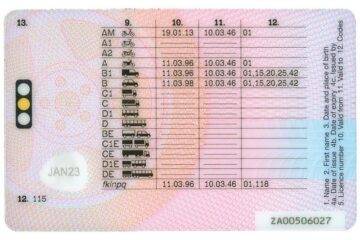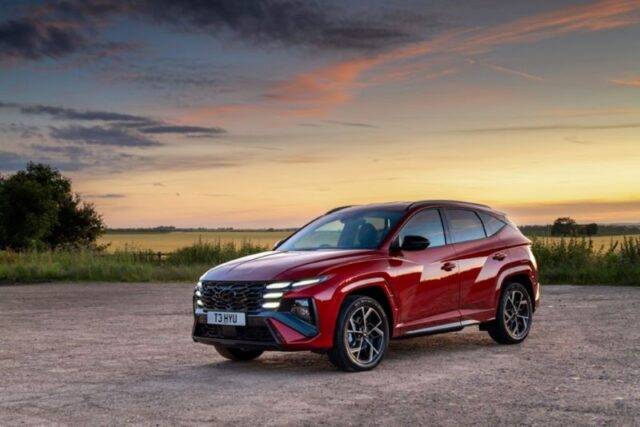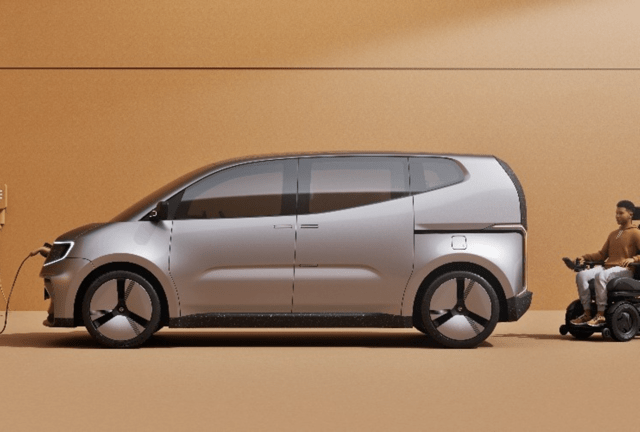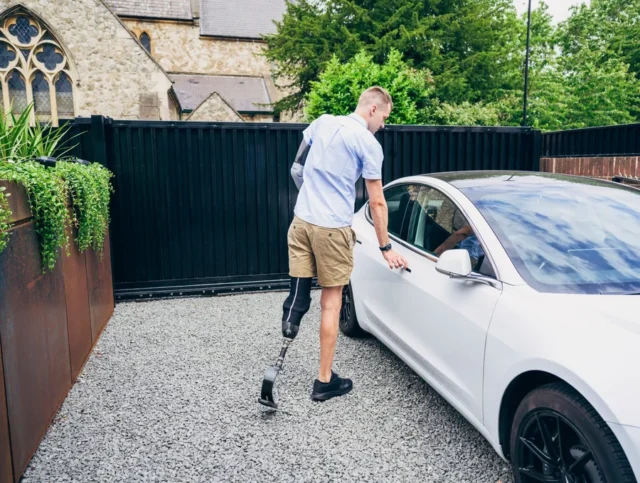All About Driving Licence Codes
In the UK, the Driver & Vehicle Licence Agency (DVLA) requires individuals with medical conditions or disabilities to inform them of their condition. This is because certain driving licence codes might have to be applied to ensure you’re driving legally and are fully insured. This also applies if you need adaptions to control a vehicle as codes must be added to your driving licence.
In this article, Emma from MotaClarity explores the different UK driving licence codes and what they mean for motorists with a disability.
Understanding Driving Licence Codes: What You Need to Know
Driving licence codes are the short, alphanumeric strings that appear on your photocard driving licence. They represent any restrictions or conditions that apply to your licence and are used by the DVLA and the police to denote the type of vehicles that motorists can drive (it’s a bit different for drivers in Northern Ireland).
It’s important to check these codes, as it could be the difference between driving legally or not. If you are caught driving a vehicle that is not covered by your licence, your insurance will be automatically invalidated, and you could be hit with up to six penalty points and a fine of up to £1,000.
To check which cars you’re allowed to drive, take a look at section 9 on the front of your card then turn over to the back to see the dates that apply.
Here are the UK driving licence categories that apply to vehicles:
AM – Two or three wheeled vehicles with a maximum speed of between 15.5 and 28 mph, and maximum weight of 350kg.
A1 – Motor tricycles with a power output of up to 15kW. Motorbikes with an engine size up to 125cc, power output of up to 11kW, and a power to weight ratio of no more than 0.1kW/kg.
A2 – Motorbikes with a maximum power output up to 35kW, and power to weight ratio of 0.2kW/kg. This also covers motorbikes in the A1 category.
A – Motorbikes with a power output over 35kW, or power to weight ratio of 0.2kW/kg. Motor tricycles with a power output over 15kW. A1 and A2 motorbikes are also covered.
B1 – Motor vehicles with four wheels with a maximum weight of 550kg if they are designed for carrying goods, or 400 kg if they are not carrying a load.
B – A standard car. If you passed your test after 1 January 1997, you can drive vehicles with a maximum combined weight of 3500kg and eight passenger seats. You can also drive motor tricycles with a power output over 15kW if you are over 21. If you passed before 1 January 1997, you can drive a combined weight of 8250kg, and a minibus with a trailer over 750kg.
C1 – Vehicles with a maximum weight between 3,500 and 7,500 kg, with a trailer up to 750kg.
C – Vehicles over 3,500kg, with a trailer up to 750kg.
D1 – Vehicles with no more than 16 passenger seats, a maximum length of 8 metres, and a trailer up to 750kg.
D – Any bus with more than eight passenger seats, with a trailer up to 750kg.
BE – Vehicle with a maximum weight of 3,500kg with a trailer.
C1E – C1 category vehicles with a trailer over 750kg, however the combined weight cannot exceed 12,000kg.
CE – Category C vehicles with a trailer over 750kg.
D1E – Category D1 vehicles with a trailer over 750kg, yet the combined weight cannot exceed 12,000kg.
DE – Category D vehicles with a trailer over 750kg.
F – Agricultural tractors.
K – Mowing machines and pedestrian-controlled vehicles.
Q – Two and three wheeled vehicles without pedals, with a maximum engine size of 50cc and speed of 15mph.
It’s worth noting that you do not currently need a driving licence for electric bikes, mobility scooters or powered wheelchairs.
Understanding The Back Columns

The easiest way to check which categories and vehicles your licence covers is to check the back of your card. It will display four categories:
Column 9 lists the type of vehicles that you are allowed to drive
Column 10 the earliest date from which a driving category is valid from
Column 11 the date the driving category is valid until
Column 12 relates to certain rules or restrictions through driving licence codes
Below are some of the most common driving licence codes that apply to cars and what they mean for motorists with mobility issues and disabilities:
| 01 | Eyesight correction (glasses or contact lenses) |
| 02 | Hearing/communication aid |
| 10 | Modified transmission |
| 15 | Modified clutch |
| 20 | Modified braking systems |
| 25 | Modified accelerator systems |
| 30 | Combined braking and accelerator systems (for licences issues before 28 November 2016) |
| 31 | Pedal adaptations and pedal safeguards |
| 32 | Combined service brake and accelerator systems |
| 33 | Combined service brake, accelerator and steering systems |
| 35 | Modified control layouts |
| 40 | Modified steering |
| 42 | Modified rear-view mirror(s) |
| 43 | Modified driving seats |
| 78 | Restricted to vehicles with automatic transmission |
To see the full list of driving licence codes, visit the DVLA website.
Decoding Driving Licence Restriction Codes
These are just a few of the many driving licence codes that may apply to drivers with a disability. If you’re unsure what codes appear on your licence or what they mean, you can check online via the DVLA website or contact the DVLA directly for further clarification.
It’s also important to note that driving with a disability may require additional disability assessments or driving adaptations to ensure you can operate the vehicle safely. The DVLA may also require regular medical checks to ensure your condition does not affect your ability to drive.
In conclusion, understanding driving licence codes is crucial for all motorists, especially those with a disability. These codes provide important information about any restrictions or conditions that apply to your licence and help to ensure you are driving safely and legally.
If you require further information about driving with a disability, check out Mobility in Motion’s helpful guides or contact the team on 0800 288 4422.
Thanks once more to Mobility in Motion for having us as a guest on your website! For more insightful tips and motoring updates, don’t forget to visit the MotaClarity website. Happy driving!

Accessible travel
The Best Cars Currently Available On The Motability Scheme
The Motability Scheme is fantastic for disabled people, providing them with the opportunity to lease a brand-new car using their qualifying Mobility Allowance. With so many…

Accessible travel
The Future of Electric WAVs: Overcoming Challenges & Embracing Accessibility
Discover the challenges of Electric Wheelchair Accessible Vehicles (eWAVs) and how our innovative adaptations are paving the way for accessible EVs today. Explore our insights into…

Driving with adaptations
Cost-Effective and Reliable Driving Aids for Amputees: Our Recommendations
Life after limb loss and amputation doesn’t have to mean the end of driving. Although it can affect your mobility and driving ability, there are a…